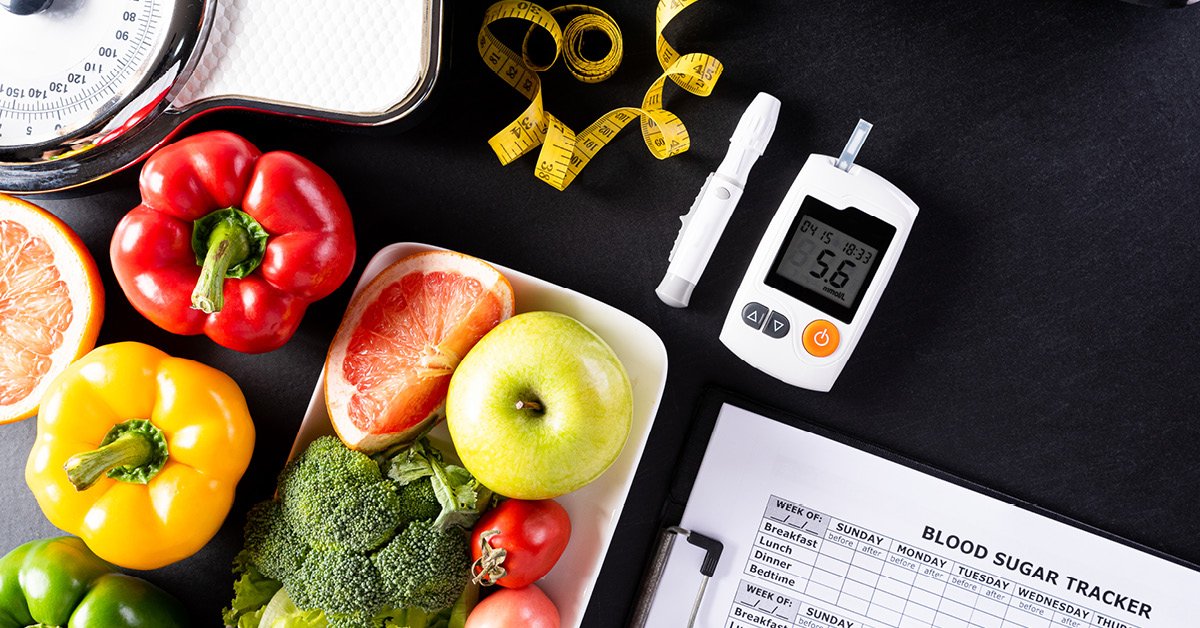1. Choose Whole Grains Over Refined Carbohydrates
Refined carbohydrates, such as white bread, white rice, and most processed snacks, are quickly broken down into glucose in the bloodstream. This can lead to rapid spikes in blood sugar levels, which can be particularly problematic for people with insulin resistance or diabetes.
On the other hand, whole grains contain fiber, which slows down the digestion and absorption of carbohydrates, leading to more gradual increases in blood sugar. Examples of whole grains include:
- Oats
- Brown rice
- Quinoa
- Whole wheat
- Barley
Whole grains are also rich in vitamins, minerals, and antioxidants, which are beneficial for overall health. When you opt for whole grains, your blood sugar levels remain more stable, reducing the risk of high spikes and lows.
2. Incorporate High-Fiber Foods
Fiber plays a key role in regulating blood sugar by slowing the rate at which food is digested and glucose is released into the bloodstream. The two types of fiber—soluble and insoluble—each contribute to blood sugar control in different ways:
- Soluble fiber dissolves in water to form a gel-like substance, helping slow the absorption of sugar. It’s found in foods like oats, beans, lentils, apples, and carrots.
- Insoluble fiber does not dissolve in water, but it helps regulate bowel movements and contributes to overall digestive health. It’s found in foods like whole grains, nuts, and many vegetables.
Fiber-rich foods also help you feel fuller for longer, reducing the temptation to overeat, which can lead to blood sugar imbalances. Good sources of fiber include:
- Leafy greens (spinach, kale, collard greens)
- Legumes (lentils, chickpeas, kidney beans)
- Whole fruits (especially apples, berries, and pears)
- Vegetables (broccoli, carrots, sweet potatoes)
- Nuts and seeds (almonds, chia seeds, flaxseeds)
3. Balance Your Meals with Protein and Healthy Fats
Balancing your meals with protein and healthy fats can help stabilize blood sugar levels by slowing the rate at which glucose enters the bloodstream. Protein and fats take longer to digest than carbohydrates, helping prevent rapid spikes in blood sugar after meals.
- Lean proteins such as chicken, turkey, fish, eggs, tofu, and low-fat dairy products are excellent choices. These proteins help improve insulin sensitivity and maintain muscle mass.
- Healthy fats, like those found in avocados, olive oil, nuts, seeds, and fatty fish (such as salmon, mackerel, and sardines), help improve insulin sensitivity, regulate hunger, and support overall metabolic health.
In addition, consuming protein and fat with carbohydrates (e.g., having a piece of chicken with brown rice) helps slow down the digestion and absorption of glucose, which helps prevent spikes.
4. Watch Portion Sizes
Even healthy foods can contribute to blood sugar fluctuations if consumed in excessive amounts. Eating large portions can lead to excessive calorie intake, weight gain, and insulin resistance, all of which can negatively affect blood sugar control. To prevent this:
- Use smaller plates to help control portion sizes.
- Consider using a food scale or measuring cups to track your food intake more accurately.
- Focus on eating balanced meals with appropriate portions of protein, fiber, healthy fats, and carbohydrates.
It’s also beneficial to follow the plate method, which recommends filling half of your plate with non-starchy vegetables, one-quarter with lean protein, and one-quarter with whole grains or starchy vegetables.
5. Limit Sugary Foods and Beverages
Sugary foods and beverages, including candy, pastries, sugary drinks (such as soda and fruit juices), and desserts, are a major contributor to blood sugar spikes. These foods provide a rapid source of glucose that your body may not be able to process effectively, especially if insulin sensitivity is impaired.
Instead, aim for whole foods with natural sugars, such as fruits, which are packed with fiber, vitamins, and antioxidants. When craving something sweet, opt for a small portion of fruit or other low-glycemic foods that don’t cause a sharp spike in blood glucose.
Additionally, consider reducing or eliminating sugary drinks like sodas, sports drinks, and sweetened coffee or tea. These liquids can cause an immediate rise in blood sugar and provide little nutritional value.
6. Eat More Non-Starchy Vegetables
Non-starchy vegetables are low in carbohydrates and rich in fiber, making them an excellent choice for managing blood sugar levels. They are also full of essential vitamins, minerals, and antioxidants that support overall health and well-being.
Examples of non-starchy vegetables include:
- Leafy greens (spinach, kale, arugula)
- Cruciferous vegetables (broccoli, cauliflower, Brussels sprouts)
- Cucumbers
- Bell peppers
- Zucchini
- Tomatoes
These vegetables can be consumed in large quantities without significantly affecting blood sugar levels, which makes them an essential component of a blood-sugar-friendly diet. Including a variety of colorful vegetables in your meals also provides a broader range of nutrients.
7. Drink Plenty of Water
Staying hydrated is crucial for maintaining healthy blood sugar levels. Dehydration can cause blood sugar levels to rise, as the body struggles to flush out excess glucose through urine.
- Water is the best option for staying hydrated. Aim to drink plenty of water throughout the day to support kidney function and help prevent blood sugar imbalances.
- Limit sugary drinks and caffeinated beverages, as these can contribute to dehydration and affect blood sugar control.
8. Monitor Your Blood Sugar Levels
For individuals with diabetes or prediabetes, regular blood sugar monitoring is essential for understanding how different foods impact your blood glucose levels. This can help you make informed dietary choices and adjust your meal plan as needed. It also helps identify patterns, such as foods or meals that cause spikes or dips in blood sugar, allowing you to adjust your eating habits accordingly.
If you’re unsure how to monitor your blood sugar, consult with a healthcare professional who can provide guidance on the best methods and equipment for your specific needs.
9. Choose Low Glycemic Index (GI) Foods
The glycemic index (GI) measures how quickly a carbohydrate-containing food raises blood sugar. Foods with a high GI (e.g., white bread, sugary cereals, and some potatoes) can cause quick blood sugar spikes, while foods with a low GI (e.g., most vegetables, legumes, and whole grains) lead to a slower, more gradual rise in blood sugar.
Examples of low-GI foods include:
- Non-starchy vegetables
- Whole grains like quinoa, barley, and bulgur
- Legumes (lentils, beans, peas)
- Sweet potatoes (compared to white potatoes)
By incorporating more low-GI foods into your diet, you can better regulate blood sugar and reduce the risk of developing insulin resistance.
10. Consider Meal Timing and Frequency
When you eat is as important as what you eat. Consuming smaller, balanced meals throughout the day can help regulate blood sugar and prevent extreme fluctuations.
- Avoid long gaps between meals, which can lead to excessive hunger and overeating.
- Breakfast is crucial, as it helps stabilize blood sugar after the overnight fasting period. Aim for a balanced breakfast with protein, fiber, and healthy fats to start your day.
- Eat regular meals and snacks, aiming to eat every 3-4 hours to avoid large fluctuations in blood sugar.
If you’re managing diabetes or prediabetes, it’s a good idea to work with a healthcare provider or dietitian to develop a personalized meal schedule.
Sample Day’s Meal Plan for Blood Sugar Management:
Breakfast:
- Oatmeal made with unsweetened almond milk, topped with chia seeds, a handful of walnuts, and a few sliced strawberries.
Mid-Morning Snack:
- A small apple with a tablespoon of almond butter.
Lunch:
- Grilled chicken breast with a mixed green salad (spinach, kale, and arugula) topped with avocado, cherry tomatoes, cucumber, and olive oil dressing.
Afternoon Snack:
- Carrot and celery sticks with hummus.
Dinner:
- Grilled salmon with quinoa and a side of steamed broccoli and roasted sweet potatoes.
Evening Snack:
- A small handful of almonds or a hard-boiled egg.
By following these guidelines and focusing on nutrient-dense, whole foods, you can better maintain healthy blood sugar levels and support your overall health. However, it’s important to consult with a healthcare provider or a registered dietitian if you have specific health concerns, such as diabetes or prediabetes, to tailor a diet plan that works best for your individual needs.































